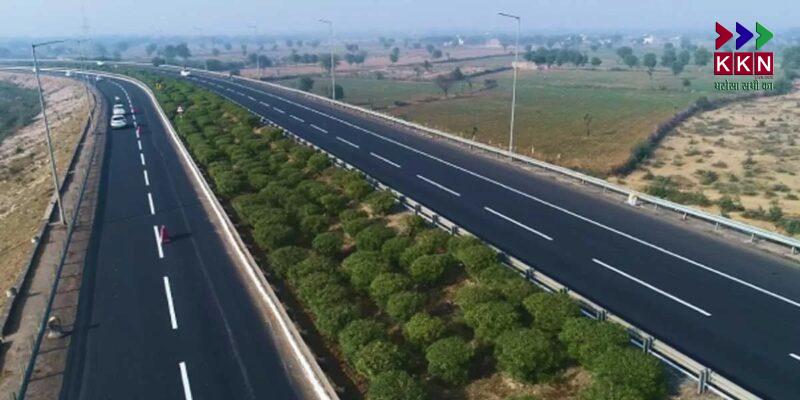
In a significant move aimed at enhancing Bihar’s road infrastructure, the state government has approved three major road projects along the Ganges. These projects, which will span a total of 119 kilometers, are expected to revolutionize connectivity, boost industrial growth, and promote tourism. With a combined budget of Rs 17,000 crore, the initiative marks a transformative phase for the state’s infrastructure development. The approval of these projects comes as part of Bihar’s larger effort to improve its economic landscape and cater to the needs of both local residents and visitors.
The Ganga Road Projects: An Overview
The newly approved road projects will primarily focus on creating modern, efficient transport corridors along the Ganges, one of the most iconic rivers in the country. The three roads that have received approval are:
Digha-Sherpur-Bihata-Koilwar (35.65 km)
Munger-Sultanganj Road (42 km)
Sultanganj-Bhagalpur-Sabour Stretch (41.33 km)
These projects are set to enhance connectivity between various towns, including Bihata, Koilwar, Munger, and Bhagalpur, which are known for their industrial significance. This development will not only provide better transportation links for local industries but also make the region more accessible to tourists. By facilitating smoother transport of goods and visitors, these roads will play a key role in driving the local economy.
Hybrid Annuity Model (HAM) to Fund the Projects
One of the key features of these road projects is their financing structure. The state government has opted for the Hybrid Annuity Model (HAM) for the first time in Bihar. Under this model, the state will finance 40% of the total costs, while the remaining 60% will be provided by private developers. These private developers will then receive annuity payments during the concession period, which will help ensure the smooth execution and maintenance of the roads.
This unique funding mechanism will likely accelerate infrastructure development in Bihar, while also attracting private investments to the state. As the first large-scale road project to use HAM, these developments are expected to set a precedent for future infrastructure projects in the region.
Project Costs and Breakdown
The costs for each of the three roads vary, reflecting their scope and the resources required for construction. The breakdown is as follows:
Digha-Sherpur-Bihata-Koilwar: Estimated at Rs 6,495.79 crore.
Munger-Sultanganj Road: Estimated at Rs 5,119.80 crore.
Sultanganj-Bhagalpur-Sabour Stretch: Estimated at Rs 4,849.83 crore.
The total cost of these projects is set at Rs 17,000 crore, which will be invested into creating faster, more modern, and wider transport links that will serve both the local population and industries in these areas.
Impact on Connectivity and Economic Growth
The construction of these roads will have far-reaching implications for connectivity in Bihar. The improved infrastructure will enhance access to important industrial centers such as Bihata, Koilwar, Munger, and Bhagalpur. This, in turn, will support industrial growth by providing more efficient transport routes for both goods and services.
Additionally, the roads will significantly reduce travel time, thus improving the overall economic efficiency of these areas. Industries and local businesses will benefit from easier access to larger markets, both within Bihar and in neighboring states.
As the roads take shape, they are also expected to create a more conducive environment for new industries, potentially attracting both domestic and international investment. The projects align with Bihar’s larger strategy to strengthen its economic and industrial infrastructure, paving the way for sustainable growth in the coming years.
Tourism Boost Along the Ganges
In addition to boosting connectivity, the Ganga road projects are also set to have a positive impact on tourism. Bihar, with its rich history and numerous religious and cultural sites along the Ganges, stands to benefit significantly from improved access. The roads will provide easier and faster routes to popular destinations, encouraging both domestic and international tourists to explore the region.
Bihar is home to several important pilgrimage sites, including the ancient city of Patna, the famous Mahabodhi Temple in Bodh Gaya, and the historical town of Munger. With the Ganga Path corridor, tourists will find it easier to travel between these destinations, thereby increasing footfall in the state.
The improved infrastructure will also facilitate better transportation of goods to and from these sites, supporting the local economy. Additionally, tourists will benefit from more comfortable and accessible travel options, which is likely to increase the number of visitors to the region.
The Ganga Path Corridor: A Vision for the Future
The construction of these roads is part of a broader vision to create a ring road around the Ganges. The ultimate goal is to ease traffic congestion in Patna and surrounding districts. With better connectivity and improved road infrastructure, the Ganga Path corridor will help reduce pressure on Patna’s traffic system, which has been a long-standing issue for the city.
The development of a comprehensive Ganga ring road will not only benefit the people of Patna but will also improve the overall traffic flow in the entire region. This infrastructure improvement is expected to support the future growth of the state, especially in terms of industrialization and tourism.
Key Dates and Upcoming Milestones
The tendering process for all three projects has already been completed, and the necessary land for construction is ready. On October 4, 2025, Chief Minister Nitish Kumar is scheduled to lay the foundation stone for one of the road projects. This event will formally kick off the next phase of the Ganga Path initiative and is expected to signal the beginning of a new era of infrastructure development in Bihar.
The completion of these road projects will be a major milestone for Bihar, aligning with the state’s vision of modernizing its infrastructure and fostering economic growth.
Government’s Commitment to Infrastructure Development
Bihar’s commitment to infrastructure development has been clear under the leadership of Chief Minister Nitish Kumar, with support from Prime Minister Narendra Modi. The state government is keen to boost connectivity, industrial development, and tourism, all of which are critical to Bihar’s future prosperity. These projects are expected to create a ripple effect, benefiting the people of Bihar for years to come.
The focus on infrastructure aligns with the government’s broader plan to improve the state’s position on the national development map. By improving connectivity and creating better road networks, Bihar is set to become a more competitive and attractive destination for investment and tourism.
A Significant Leap in Bihar’s Road Infrastructure
With the approval of these three road projects, Bihar is taking a significant step forward in terms of road infrastructure development. The Ganga Path corridor will not only transform the transport landscape but also position the state as a key player in India’s economic and tourism growth.
As these projects begin to take shape, they will pave the way for a brighter future for Bihar, with improved connectivity, enhanced industrial growth, and increased tourism activity along the banks of the Ganges. This initiative is expected to make Bihar a more attractive destination for businesses, travelers, and investors alike, contributing to its long-term economic success.
The state government’s strategic focus on infrastructure will ultimately support the broader vision of regional development, making Bihar a key driver of economic progress in eastern India. With these major road projects, the state is setting itself up for a transformative future in terms of both economic growth and regional connectivity.


